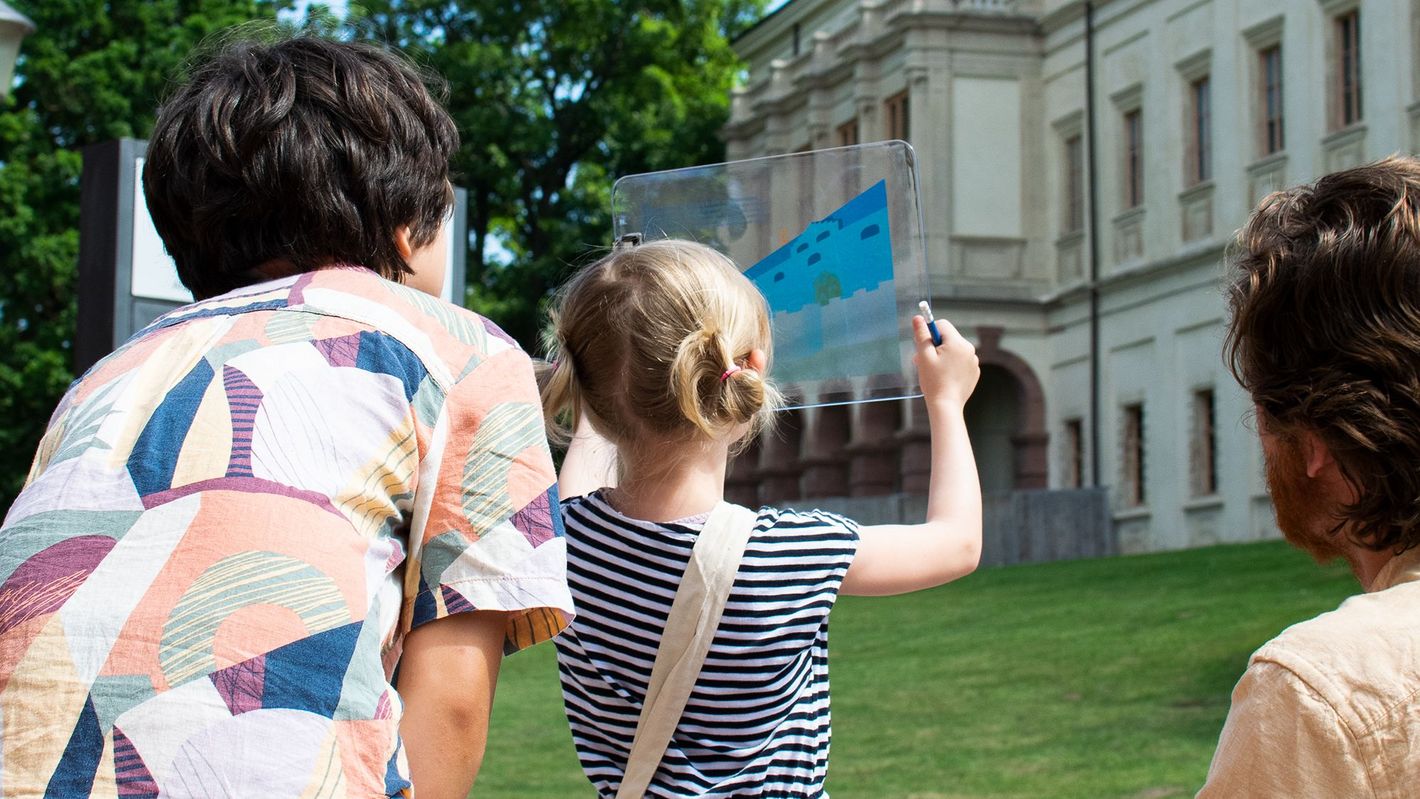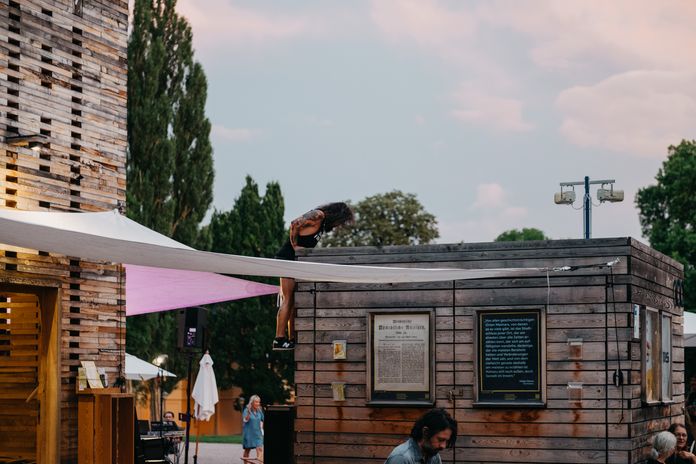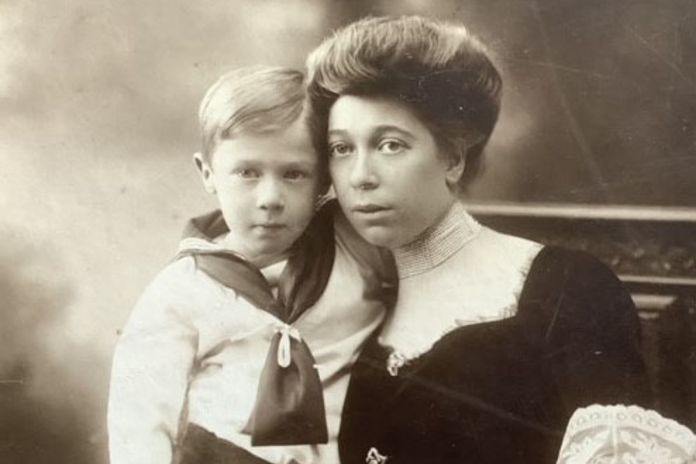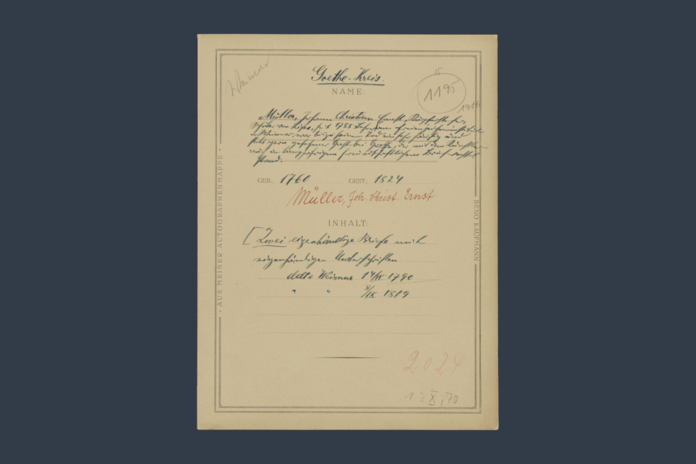Rediscover History
The Weimar City Palace can tell us much more than just the stories of the people who once lived there. Artist Katherin Gutiérrez Herrera speaks with us about the new Discovery Bags.
Katherin, you came up with the new Discovery Bags for the City Palace. What are the Discovery Bags?
You can think of the Discovery Bags as a detective game. It invites children and families to discover the palace (which is being renovated and is only accessible by tours at the moment) from a different perspective. The bags contain five puzzles that can be solved using tools such as a map, a tape measure or binoculars. Each puzzle explains something about the history and architecture of the palace. For example, there is a sticker page where you can find out when the four wings of the palace were built by attaching stickers. The Discovery Bag is based on the Klassik Stiftung Weimar's popular backpack tour.
What was particularly important to you when designing the bags?
In an early design phase with the 9th grade of the Lyonel Feininger School, it became clear that young people are often interested in what is no longer visible and therefore not recognizable from the outside: “Who used to live in the palace?”, “Who built it?”, “Why did it burn so often?”, “How many people died in the fires?” But how do you approach the history of a building in a playful way? I made use of the palace’s architecture, which to a certain extent contains 'historical data'. If you look at the building from the outside, you can see details that reveal something about its origins. I also got a lot of ideas from my son. When I developed the bags, he was just seven-years-old and of course wasn't interested in history at all. But many places looked like fun to him: the large entrance gate, the bridge (Sternbrücke) on the east side of the palace or the peephole at the study center, for example. I picked up on these locations and playfully linked them with content.
The city palace has a very eventful history - what has particularly fascinated you personally?
I find it fascinating to see how questions of power can be read from architecture. There are castles, for example from the Middle Ages, which were built to protect from attack. But there are also palaces that express power and wealth. The south wing of the Weimar City Palace is interesting in this context. The wing was built between 1912 and 1914 during the reign of the last Grand Duke Wilhelm Ernst. Since then, the palace has been 'closed off' on all sides, turning its back on society. This shows who should be in charge - namely the monarchs - and who should not. But just four years later, the revolution reached Weimar and forced the Grand Duke to abdicate. The palace thus reflects European social history on a small scale.
The palace is currently being extensively renovated. What does your dream palace look like?
My dream palace would be a place where art, history and education are equally accessible to all. Instead of just telling the stories of the upper classes, which only represent a small part of society, there could be a focus on the architecture, construction and urban development that reflects the collective progress of the civilian population. In this way, we would learn more about the development of today's cities and houses without neglecting the stories of the upper classes. There are many interesting aspects that are exciting for everyone, including children.
How can you find the Discovery Bags?
The Discovery Bags can be borrowed free of charge from 2 to 6 p.m., Wednesday to Sunday from Mai to October at the Co-Labor in front of the City Palace. You can either come alone or in a group. The discovery booklets in the bag can be kept as a souvenir after the tour.





Write new comment